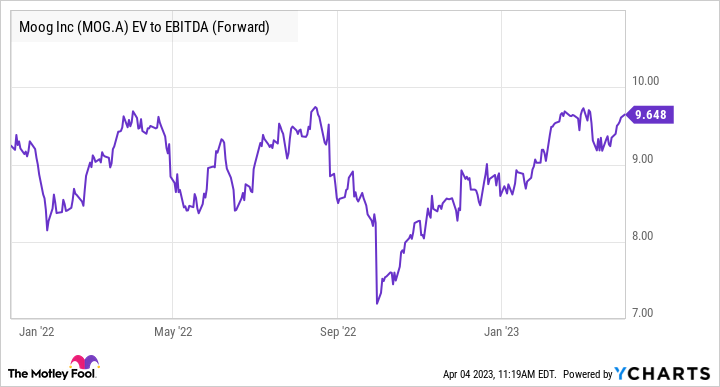If you are an investor who believes in "buy high and sell higher," then it makes sense to look closely at nVent Electric (NVT 1.68%) and aerospace and defense supplier Moog (MOG.A 7.22%) (MOG.B -1.23%), two stocks that have significantly outperformed the S&P 500 over the last year and delivered excellent returns for investors. Both look like excellent buys for investors in the current environment.
An "electrification of everything" stock
I discussed nVent Electric at greater length late in 2022, and since then it's done pretty well, putting up a 13% gain. That said, now isn't the time to sell, because it remains an outstanding value stock. nVent offers electrical connection and protection products that are a necessary and regulatory requirement for electrical installations.
As such, it's a picks-and-shovels play on the "electrification of everything" megatrend. It encompasses growth industries such as industrial automation and digitization of the industrial sector, data centers, smart buildings/infrastructure, power, and renewable investment.
These are powerful secular growth trends in the economy, and their continued strength led nVent's management to beat and raise full-year guidance on every earnings call last year. Management recently held an analyst meeting and told investors to expect annual organic sales growth of 4%-6% from 2023-2025, with adjusted EPS growing 8%-10% annually and free cash flow (FCF) conversion from net income of 100%.
Based on the low point of those figures, nVent will generate about $2.59 and $2.79 in FCF per share in 2023 and 2024, respectively, putting it at 17 times FCF in 2023 and 15.8 times FCF in 2024. That's too cheap for a company with such good long-term growth prospects.

Image source: Getty Images.
An underfollowed aerospace and defense play
No, this Moog is not the inventor of the legendary Moog synthesizer (that was the founder's cousin, Robert Moog). This company is a manufacturer of high-performance motion control and fluid systems used in aircraft controls, industrial systems, and space and defense controls.
A breakout of its 2022 end-market revenue is shown below. Its aerospace and defense revenues are primarily from long-term contracts with a few large companies (the usual suspects like Boeing, Raytheon, Lockheed Martin, Honeywell, General Dynamics, etc.). Within defense, Moog names the F-35, F-15, and F-16 airplanes as significant programs in defense, and Boeing and Airbus are key customers in commercial aerospace.
Meanwhile, its industrial systems sales go to a wide range of customers with relatively short lead times -- so you'll see any sign of a slowdown in this end market first. Key industrial customers include Philips Healthcare, aerospace simulation and training companies CAE and Flight Safety, and underwater technology companies MacArtney and Oceaneering.

Data source: Moog presentations.
In a nutshell, Moog stands to benefit from the commercial aerospace recovery and a pickup in demand for military equipment in light of the conflict in Europe. The former looks inevitable given the multi-year backlogs at Boeing and Airbus, and both major commercial airplane manufacturers are straining to ramp production. Meanwhile, the need to replenish equipment transferred to Ukraine and heightened awareness around the need to ramp military spending suggests Moog's end markets will remain in growth mode for years.
Turning to valuation matters, the stock is a good value on an enterprise value (market cap plus net debt) to earnings before interest, taxation, depreciation, and amortization (EBITDA) basis.
Data by YCharts
Still, Moog needs to do a better job of converting EBITDA into FCF. Wall Street expects the company to do that after it gets over the supply chain issues and capital spending requirements (to fuel future growth) in recent years. The supply chain issues have led many stocks in the aerospace and defense sector toward elevated working capital requirements (notably purchasing costly inventory) in the near term. Moog is one of them.
However, these issues' effects on FCF should improve markedly. Indeed, Wall Street analysts expect around $220 million in FCF in 2024, putting Moog on a forward price to FCF multiple of 14.4 times. That's too cheap for a business with such attractive end markets, making Moog look like an excellent value stock.






